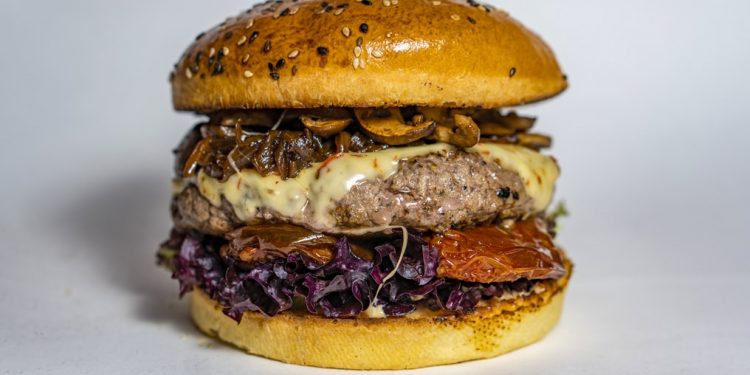The Red Meat is one of the most important for human nutrition food, as it provides valuable proteins and minerals like iron, as well as some essential amino acids.
Due to the cruelty with which animals are treated on the trails, various organizations such as PETA are struggling to sensitize the population and reduce their consumption of meat.
But, apparently, animals are not the only ones affected by the consumption of meat. According to an article from the Food and Agriculture Organization of the United Nations (FAO), livestock activity sent more greenhouse gases into the atmosphere than the motorized transport sector itself.
To be exact, livestock had 18% more CO2 emissions than those produced by cars, this only in 2006.
In addition to this, livestock activities contribute to the deterioration of soils, water pollution and loss of biodiversity.
With the purpose of giving a solution to these problems, Professor Mark Post designed, together with his research team, a type of meat grown in the laboratory, from animal cells that grow outside the body of a living being.
Professor Post is a renowned researcher at the University of Maastricht, in the Netherlands, and scientific director of Mosa Meat, the company that presented the first burger with meat grown in a laboratory to the world.
This meat was presented during a conference in London in 2013. It was announced as the world’s first sacrificeless burger, as it was harvested directly from the cells of a cow, instead of raising and sacrificing a complete animal.
The development of this meat was the result of years of research at the University of Maastricht and had a cost of 250 thousand euros. A fairly high price for a hamburger if it looks superficial, but the cost-benefit is incalculable.
Thanks to the advances in the research, the cost was reduced to 7.5 euros per hamburger, to make possible its commercialization. The main motivation of Post and his team was to find a viable method to make real meat sustainable, healthy and with a high nutritional level.
Mosa Meat intends to market the so-called ‘clean meat’ in Europe and other countries. That is why the research continues, to increase the quality of your product and lower costs even more.
«We announce an investment of € 7.5M Series A from Merck Ventures, Bell Food Group, and others to create the future of meat»
The process for making “artificial” meat is not simple, but it is similar to getting beef, except that animal cells grow out of a body.
The process for making clean meat begins with a small biopsy, thanks to which a sample of the muscle cells of a previously sedated animal is taken.
Within the organism of the animal, these collected cells (called myostatellites) have the function of creating new muscle tissue when it is injured.
My satellites are placed in a container with nutrients that favor their natural growth and allow them to reproduce just as they would in the animal’s body.
The researchers let them reproduce until they get billions of cells from a small sample. This growth occurs in a bioreactor, similar to that used in the fermentation of beer.
When scientists want cells that have marked differences to muscle cells, they should only stop feeding them. The remaining cells fuse to form myotubes, which are muscle fibers greater than 0.3 mm long.
The myotubes are placed inside a gel composed mostly of water, which helps these cells to contract and increases their size, forming strands of muscle tissue. When all the strands overlap, the meat is obtained.
From a small sample of a cow, Post’s scientific team is capable of producing 800 million strands of muscle tissue, enough to create 80 thousand burgers of average size (1/4 of a pound).
This meat can be treated like the common one, that is, it can be ground, fried, baked or roasted. Mosa Meat scientists point out that the process of making this meat does not involve any kind of genetic modification.







